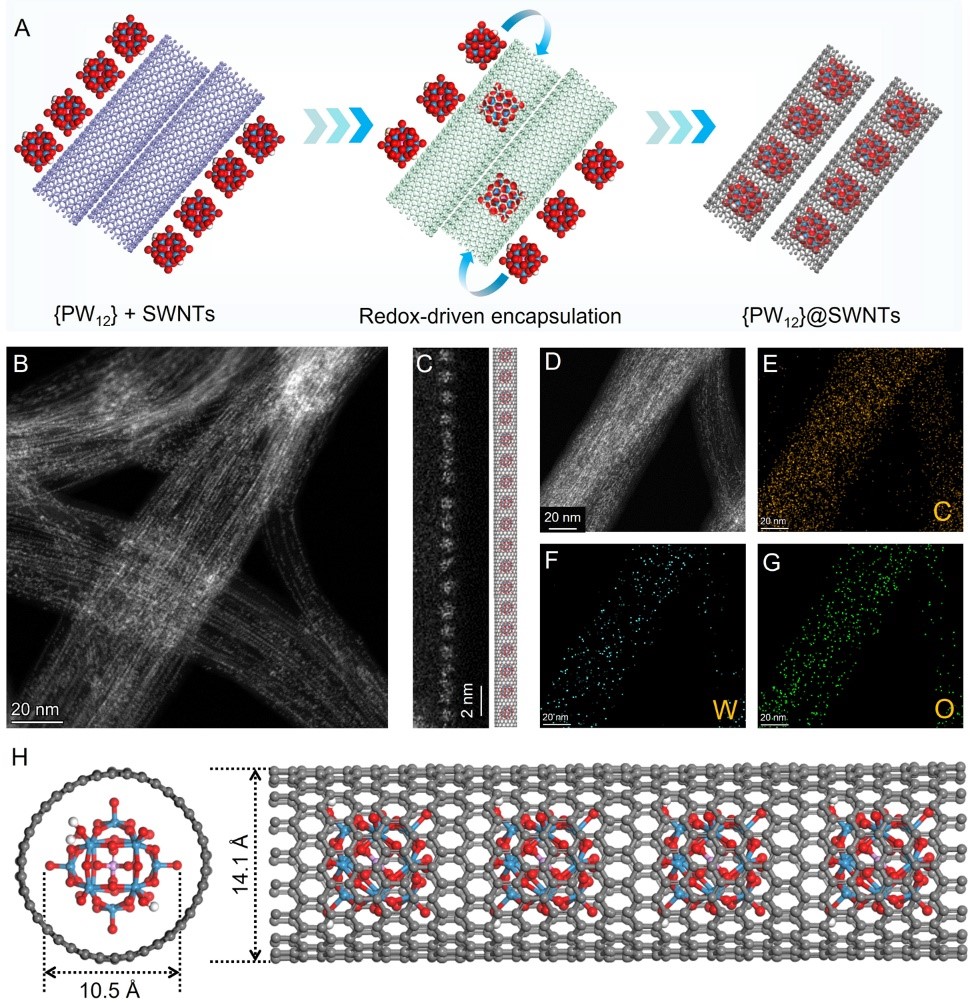Carbon nanotubes (CNTs) are considered ideal electrochemical energy storage materials due to their high electrical conductivity, large theoretical surface area, and good chemical stability.
However, CNTs tend to aggregate due to strong van der Waals forces, which reduces their electrochemically active area. This problem is even worse for single-walled carbon nanotubes (SWNTs) due to their high length-to-diameter ratio.
Recently, a joint research team led by Dr. WANG Xiao from the Shenzhen Institute of Advanced Technology (SIAT) of the Chinese Academy of Sciences, Dr. ZHU Sheng from Shanxi University, and Prof. LI Yan from Peking University has encapsulated polyoxometalate guest molecules within SWNTs (with a diameter of approximately 1.4 nm) to enhance the electrochemical energy storage of CNTs.
The study was published in Cell Reports Physical Science on June 8.
Owing to the confinement effect of CNTs, polyoxometalate molecules form one-dimensional chainlike structures in the CNT cavity. Such well-defined polyoxometalate@SWNT hybrids are promising as electrode materials candidates for supercapacitors.
The electron transfer from CNTs to polyoxometalates reduces the surface charge density of nanotubes, which then weakens the van der Waals forces and suppresses aggregation. Accordingly, SWNTs filled with polyoxometalates show a larger electrochemically active area and higher double-layer capacitance.
Polyoxometalate molecules can provide pseudocapacitance through reversible redox reactions, thus improving the capacitive performance of the polyoxometalate@SWNT hybrids. Notably, the confinement effect of CNTs greatly improve the cycling stability of encapsulated polyoxometalates.
As a result, this one-dimensional hybrid material exhibits enhanced electrochemical energy storage properties, with a specific capacitance of 328.6 farads per gram (@ 10 millivolts per second), which is higher than that of pure SWNTs (172.2 farads per gram). Furthermore, the assembled supercapacitor maintains a capacity retention rate of 91.3% after 10,000 cycles.
"Our study offers valuable insights into the research on the confinement effect of CNTs, which holds immense potential for harnessing high-performance energy storage and conversion materials," said Dr. WANG Xiao, a corresponding author of the study.

Schematic illustration and electron microscopy characterization of one-dimensional heterostructures of SWNT-confined polyoxometalate clusters. (Image by WANG Xiao)






